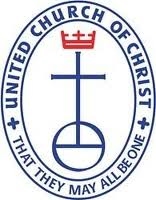 I spoke on Sunday about the practice of walking a labyrinth. I eventually covered the practice of saying “no,” and the two practices are interrelated. A labyrinth is a path on the ground in which the walker takes a journey. There is only one path with no options; the idea is to stay on the path and keep going until you reach the center, and then backtrack the entire route. The distance from the opening (at the bottom of the diagram) to the center is rather short, but it takes awhile to get there when you follow the path. Many Christians walk a labyrinth as a guide to contemplation.
I spoke on Sunday about the practice of walking a labyrinth. I eventually covered the practice of saying “no,” and the two practices are interrelated. A labyrinth is a path on the ground in which the walker takes a journey. There is only one path with no options; the idea is to stay on the path and keep going until you reach the center, and then backtrack the entire route. The distance from the opening (at the bottom of the diagram) to the center is rather short, but it takes awhile to get there when you follow the path. Many Christians walk a labyrinth as a guide to contemplation.
I walked a labyrinth on Saturday after a memorial service in Portola Valley. Surrounded by giant redwoods, I began my journey while I thought about God and the memorial service I had just attended. I arrived at the center sooner than I had expected. I guess I was so focused on each step that I lost track of the time and where I was–which is part of the point of it all. I arrived at the center unexpectedly and stood there for a few moments as l looked out over the circular path, imagining that it was my life and I had suddenly come to its end. I was filled with gratitude for each step along the way, for I saw on every part of the path that God was with me and I was surrounded by love. I also realized that every step I took involved saying “yes” to that step and also “no” to every other possible step.
Sunday’s Gospel lesson in Luke, chapter 10, was all about saying “yes” and saying “no.” Jesus had just sent 70 of his most faithful followers to villages to prepare the way for him to later visit them. They were to bring peace to the villagers, to eat and drink their fill, to cure the sick, and to proclaim the good news that the kingdom of God had come near. The disciples were tremendously successful and now Jesus was on his way to visit those villages. In the first one he came to, he went into the home of two sisters: Mary and Martha. Jesus was with his disciples; we don’t know if it was all 70 of the ones just mentioned, but most likely there were a lot of people! Martha got busy doing what everyone expected a woman to do who was entertaining a rabbi and his entourage: getting water to wash the feet of the guests, food to eat and wine to drink.
For some reason, Mary just sat there! She didn’t do what the culture expected from a woman entertaining important guests. Her behavior was nothing short of scandalous! Furthermore, the entire passage projects a sense of extreme “busy-ness” on behalf of Jesus, his disciples and everyone they encountered–everyone, that is, but Mary. Not only was Mary thumbing her nose at the dominant culture; she was a sense of calm in the midst of haste and activity. When Martha asked Jesus to tell Mary to help her, however, Jesus responded that Mary had chosen a better way.
In his response, Jesus was looking at the dominant culture square in the face and saying: “There is a better way. Stay focused on the most important thing and don’t let anything distract your from it.” So what was that one thing that was so important? Luke had just written about it earlier in the chapter–just before he told the story of the Good Samaritan: “Love the Lord with all your heart, soul, strength and mind, and love your neighbor as yourself.” In his answer to Martha, Jesus was declaring the better way. Loving God and others was more important than anything else–even the firm expectations of the dominant culture.
Jesus was giving both sisters permission to say “yes” to love and “no” to anything that gets in its way. How might you say “yes” to love this week and “no” to anything that distracts you from it?
I hope to see you on Sunday, as we celebrate in worship with our musical guests, the M’Earth Tones, and enjoy a delicious Harvest Festival afterwards!
Pastor Alan Akana





